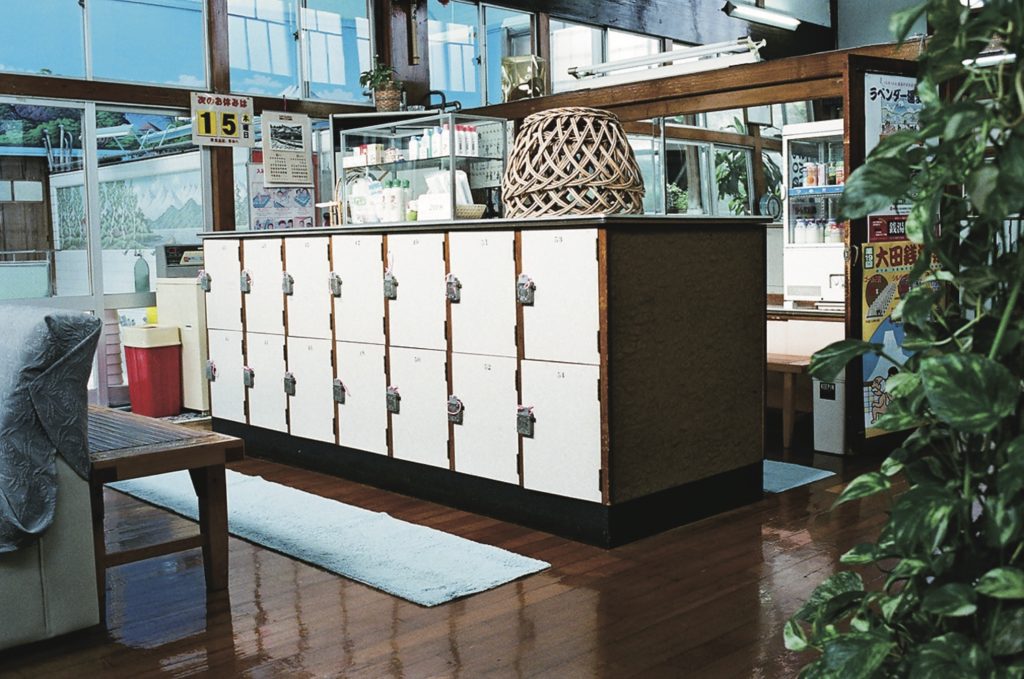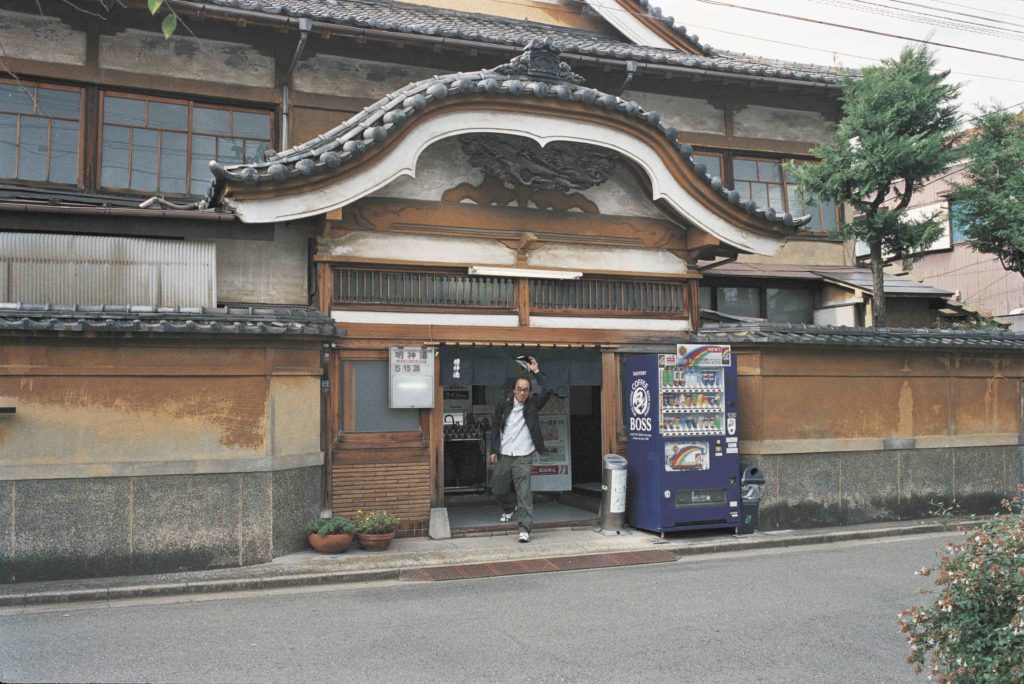
Story 03 | Sacred Architecture
Tokyo has cleverly disguised it’s Sento as lavish temples, but careful eyes can pick them out by the “hafu”, a curved wooden shape hanging over the entrance. “It symbolizes an entrance to paradise,” says sento writer, Shinobu Machida, “you can only see that shape at the entrance to a temple, on a funeral car and outside a soapland (brothel)”. Machida is one of Japan’s foremost Sento researchers. He has spent years photographing bathhouses all over Japan with his old Canon F camera and today he has brought us to what he considers to be the finest example of Tokyo Sento architecture: the 53 year old Meijin-yu in south-west Tokyo.
Even though it seems to be only a facade, the Otera (temple) style actually served an important function by attracting more customers and revitalizing Sento culture following the great earthquake in Taishou 12 (1923). The plan worked well and by about 1968 the number of Sento peaked at 2500; today there are fewer than 850. Inside the Tsuiba-jo (dressing rooms) Buddhist temple architecture is further replicated with high ceilings and a unique ‘s’ shaped structure at the juncture between roof and wall. Functional design is seen clearest in the baths themselves where the jet streams of water in the baths are generated via a complex geometric miracle of piping, enabling water to flow on a specific angle and create the right pressure. The shower area must also be slanted on the correct angle to ensure that no water pools and causes mold. Old Sento can last a long time without repairs, resilient against the constant humidity and steam.
Although Tokyo’s Sento are beautiful, Machida prefers the unadorned, minimalist baths of Osaka and Kyoto. He doesn’t see much spiritual significance in the Tokyo style aside from a brazen attempt at attracting more customers. But the spiritual dimension is hard to ignore, Japan’s first Sento were used only by priests. Today, the cycle from sacred to commonplace has almost come full circle, as Sento’s increasingly become patronized by those seeking a little more than just a physical cleansing.
< From Papersky no.31(2010) >












